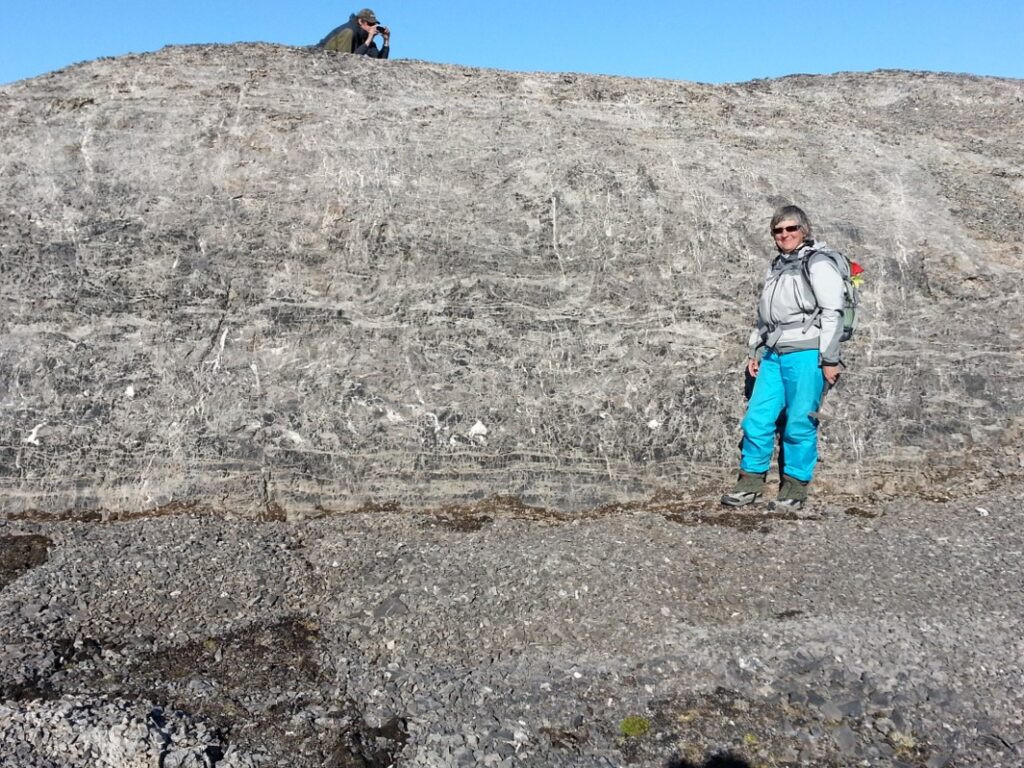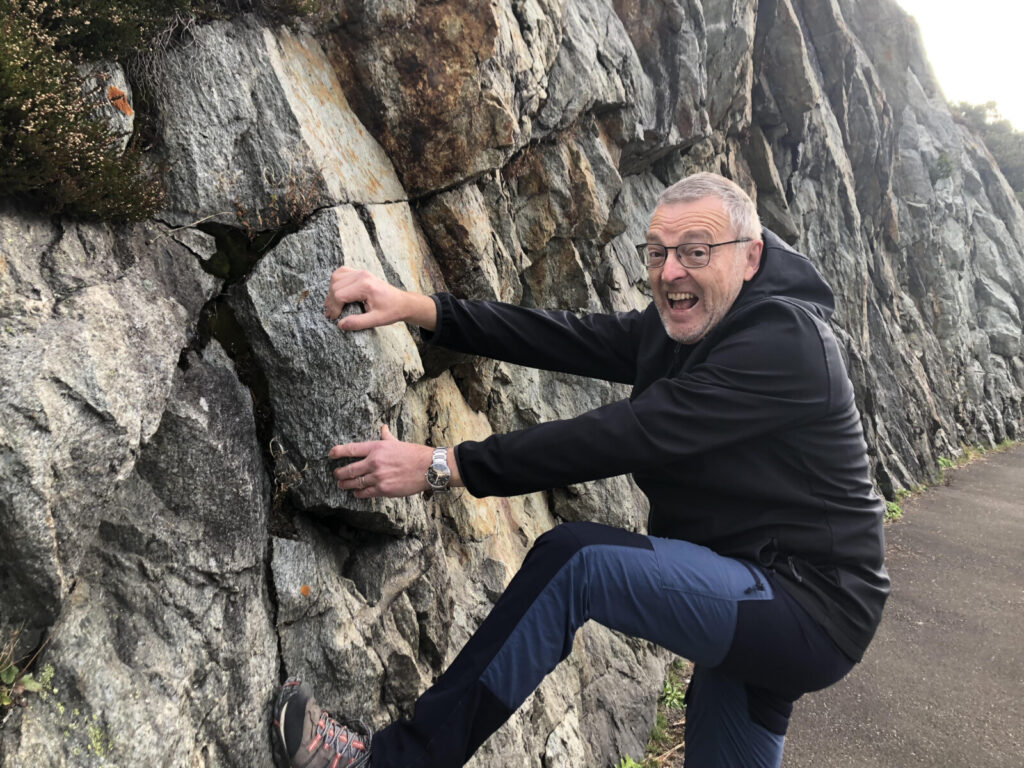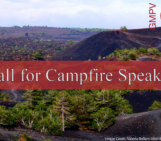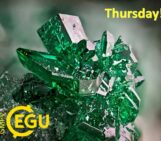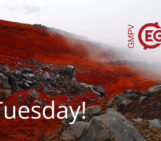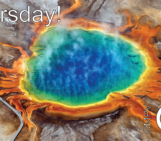
Once a year, GMPV enthusiastic scientists from all over the world gather around in Vienna for the fabulous EGU General Assembly, where very exciting and ground breaking science is presented to peers. While for some, the EGU may be reduced into a solid crazy week at the GA, for others is a year-round duty. The existence of the GMPV Division science officers ensures that every year GMPV’s early and more senior scientists have a full and rewarding experience at the GA, that researchers in these scientific domains are recognised by their efforts and achievements, and that the EGU continues to evolve to meet the constant scientific culture change demands. But who are they?
The GMPV Division has a president, a deputy president and 11 science officers (as well as webmasters and the ECS group), all very inspiring and prominent scientists. I have asked them a few questions about their work and main research interests, as well as their roles as GMPV officers and any words of advice to ECS. I was also dying to know something more personal about them, so below you will find their favourite element, mineral, rock and volcano! Because there are many officers, this “meet our EGU-GMPV science officers” post will be split into three takes. This is take 1.
1. Tell us where you work and what is your main role as a professional.
Where I work, and where I sit are two different answers. I am at University of Oslo in Norway housed in the Physics building due to tight seating in the Geosciences building. I like the environment, as every morning I pass through a large atrium with its high suspended pendulum marking Earth’s rotation. The pendulum is bracketed by two spiral staircases of fossil-rich Paleozoic marble from the Oslo rift. The many cross-sections of rugosa coral colonies are amazing. My AIRIE Re-Os-Hg laboratory is in Colorado, USA, making for an interesting commute. After 25 years at Colorado State University as a successful soft-money research unit in a chaotic geosciences department, in 2022 we moved our AIRIE Program to Innosphere Ventures, where new start-ups and multi-disciplinary funded research programs reside. The AIRIE Program is thriving with its new freedoms. Where do I work? All over the world, in 80 countries, covering every continent. I work in resource geology, from minerals to petroleum, from hard rock to muds. As a geologist first, a well-developed field context for obtaining samples for geochemistry is essential. As an isotope geochemist, sampling in a geologic context is pivotal.
2. Which area of the GMPV you think your research is closest to?
Easy answer. All four, G-M-P-V and more. There is too much isolation of disciplines, even as we use the words “multi-disciplinary” with ease. As I teach my students, again and again, read outside of your field, far outside. Go to sessions at meetings that you think would have nothing to do with your research. Find out what others are doing. Ask them about their work. Listen and learn. The most exciting moments in science are those where a light switches on in the most unlikely of circumstances. It is during those moments that you realize you have made it as a scientist.
3. Can you explain in more detail what is your main research about?
My primary research interests center on metallogenesis, the source of metals and timing of ore genesis, from the scale of belts, districts, and deposits, and the evolution of fluids during the construction of ore deposits. Similarly, what are the relationships between metal and hydrocarbon transport? We are now uncovering an intimacy between hydrothermal and hydrocarbon-rich fluids that was previously little realized. These systems (minerals and hydrocarbons) should not be studied in isolation of one another. In particular, I’m interested in organizing geologic processes in absolute time. Thus, the AIRIE Program and its scientists and students have been pioneers in developing the 187Re-187Os chronometer for applications in ore geology and within hydrocarbon systems. From there, Re-Os applications in crustal rocks spread. We were the first to use of Re-Os to date organic-rich shales marking the Permo-Triassic mass extinction. Placing absolute ages in biostratigraphy won the AIRIE Program a lot of friends!
4. How did you get involved with the EGU-GMPV division?
EGU has always been my go-to meeting along with the Goldschmidt conference. When Marian Holness filled up her 4-year term as GMPV President, we had a zoom conversation where she relayed to me that being a Division President was not too much work. Only six months into my term, I would say that being a Division President is quite a lot of work. Marian did a great job, but I’m guessing years 3 and 4 are easier than the first couple of years. I’m trainable.
5. Can you explain in more detail what is your role in the group?
In 2023, I became the President of the GMPV Division of EGU. The Division is midsize, and we have 11 Scientific Officers. In January-February, I’ll have my first real immersion, as the GMPV programming has to be set, and there is a lot-of-back-and-forth among the Divisions for scheduling.
6. What words of advice do you have to GMPV early-career scientists?
STAY THE COURSE. That is to say, never let anyone discourage or disparage you, or suggest that you cannot be successful. WORK VERY VERY HARD. As a student and ECS, that means evenings and weekends are in play. BE AN ALLY for others, speaking up diplomatically on the spot when you see others wronged, bullied, or belittled. It’s the right thing to do. BE KIND TO OTHERS. I should mention that it was at EGU where I had my first real exposure to EDI, with an invitation to join the EDI working group. Now we are an official EGU Committee! The EGU-EDI group is quite active, and there are two of us on Council.
GMPV curiosities:
G – favourite element is? Re – Rhenium
M – favourite mineral is? Molybdenite (MoS2)
P – favourite rock is? High Silica Granite
V – favourite volcano is? Mount Vesuvius
1. Tell us where you work and what is your main role as a professional.
I am an Emeritus professor at University of Geneva, Switzerland. My main research focus is in advancing high-precision U-Pb geochronology of zircon and other accessory minerals to determine precise geological timescales. Since I have always considered this an analytical tool, I have been involved in many different fields where I found dating, and especially high-precision dates, to be important to advance science.
As a lecturer at ETH Zürich, and later as a professor at University of Geneva, I have been teaching introductory classes in geology, geochemistry and isotope geochemistry, and advanced classes on a multitude of topic reflecting my scientific interests (geochronology, magmatism, orogenic dynamics, mass spectrometry). I have supervised 29 PhD students and 15 post-doctoral researchers. I was a director of the isotope geochemistry, geochronology and thermochronology laboratories at University of Geneva (TIMS, MC-ICP-MS, Ar-Ar), and had multiple tasks and duties in administration, direction and strategic development at the local, national and international level.
2. Which area of the GMPV you think your research is closest to?
I am close to geochemistry, mineralogy (my diploma is as a mineralogist) as well as petrology, but I am also member of the SSP, where I have been chairing a session on Quantitative stratigraphy for several years and been invited for talks.
3. Can you explain in more detail what is your main research about?
My research interests, I would like to group into the following topics:
(i) Reconstructing orogenic and magmatic processes in the Earth’s crust, e.g., in the basement of the Central Alps, in the Kohistan Arc of Pakistan, or along the S. American continental margin, mostly via the reconstruction of metamorphism and magmatism, and through hydrothermal-mineralized systems.
(ii) Quantifying the Phanerozoic geological timescale through high-precision dating of volcanic ashes in sedimentary sections in relation to biostratigraphy, magnetostratigraphy or cyclostratigraphy/astrochronology.
(iii) Reconstruct the amplitude and rates of climate change, biodiversity, and environmental change in the geological past, especially during periods of biotic crises (end-Permian, end-Triassic and lower Jurassic extinction periods), as well as across the “Great Oxidation Event” in the Paleoproterozoic.
(iv) Relate periods of biotic and environmental crisis to the emplacement of Large Igneous Provinces (Siberian Traps, Karoo, Central Atlantic Magmatic Province) via high-precision U-Pb dating.
(v) Enhancing our knowledge of the materials we analyse: mineralogy, crystallography, and chemical/isotopic composition of zircon and other minerals, using techniques of imaging, destructive and non-destructive analysis.
(vi) Further improvement of high-precision U-Pb geochronology through the development of analytical techniques and equipment, and correct treatment of data and their uncertainties (metrology). Contributing to the cross-calibration of different isotopic geochronometers and to the comparison between in-situ and bulk dating techniques.
4. How did you get involved with the EGU-GMPV division?
I have been asked to join the GMPV group a few years ago by the former GMPV president. I am also member of the Bunsen medal committee, being the Bunsen medallist 2021. I have started to participate in EGU meetings regularly when it was still called EUG and held in Strasbourg (in the 1990ies).
5. Can you explain in more detail what is your role in the group?
I am active in a range of subgroups, but mainly focused on magmatism and geochemistry, as well on regional geological studies. I have started a session of Variscan orogenic processes in 2023, which had quite a bit of success and will be continued.
6. What words of advice do you have to GMPV early-career scientists?
Being always very keen on networking and linking different disciplines and sub-disciplines, my main message would be to collaborate. Science is not any more done by single persons, but in multi- and interdisciplinary consortia. This makes it easier to ECS to get their place and to get integrated into a sometimes complex environment – together is always better than alone. Use meetings like EGU for networking!
GMPV curiosities:
G – favourite element is? My favourite element is Pb
M – favourite mineral is? Zircon
P – favourite rock is? Granite
V – favourite volcano is? More difficult to tell. I choose Stromboli, the only one I have been nearly on top.
1. Tell us where you work and what is your main role as a professional.
I am a professor in mineralogy at the Universität Potsdam, Germany.
2. Which area of the GMPV you think your research is closest to?
My work is connecting Geochemistry, Mineralogy and Petrology through principles of physical chemistry.
3. Can you explain in more detail what is your main research about?
I started off working on experimental element partitioning in magmatic systems on the two redox-sensitive elements Fe and Eu. Later, I worked on redox equilibria in melts and glasses. From there, I went to fluid-melt and fluid-mineral interactions, always focusing on the structural control on chemical partitioning, mineral solubility or even isotope fractionation. Lately, I have been working on melts/glasses or Fe-bearing minerals at conditions of the deep mantle, constraining the interplay of structure and chemical partitioning. Central to my work is the application of synchrotron radiation, mainly using various forms of X-ray spectroscopy, a tool to determine the local structure, valence state or spin state of elements in any matter, also at in-situ conditions. Besides this focus, I also performed or contributed to a couple of petrological-geochemical field studies.
4. How did you get involved with the EGU-GMPV group?
I was asked by colleagues to be a member of the GMPV officers in 2010 and stayed up to 2013. In 2021, I re-joined. I have been visiting the EGU regularly since 2010.
5. Can you explain in more detail what is your role in the group?
I am trying to make sure that sessions with mineralogical or material-related input are present in the program. Due to my current role as a coordinator of a German research program on ore-forming processes, I am fostering this branch with David Dolejs.
6. What words of advice do you have to GMPV early-career scientists?
Next to scientific excellence, it is important to be present at meetings and to build up a network within the community, both with people at the same career stage as well as to more experienced people. I believe it is important to have mentors and they should be not only from your home institution. A good supervisor should help finding them. Engagement in scientific societies is certainly one way to become known, but I would suggest that any service to the community is better done by more established people.
No favourites.
1. Tell us where you work and what is your main role as a professional.
I am associate professor of petrology at the Department of Chemical and Geological Sciences of the University of Cagliari, in Italy.
2. Which area of the GMPV you think your research is closest to?
For my work, I blend together geochemistry of rocks and melts, mineralogy and petrological studies of melting rocks, granitoids, as well as xenoliths in crustal magmas. Moreover, recently I am moving “upward”, developing a keen interest in garnets as well as silica polymorphs in volcanic rocks. I can say I consider myself a full GMPV scientist!
3. Can you explain in more detail what is your main research about?
I work on partial melting processes in the continental crust, right where subsolidus reactions give way to the suprasolidus field, at the junction between the metamorphic and magmatic realms. I look at these processes from the point of view of the anatectic melt produced at depth, which I find and study in small droplets preserved manly in peritectic garnet as well as other minerals. Garnet is the main peritectic phase generate by crustal melting, and it has the advantage to have been investigate extensively – indeed it is one of the most beloved minerals by petrologist due to its sturdiness, wide stability field and ability to record much of the rock history. The droplets I study are often crystallized to “nanogranitoids” or “nanorocks”, and are gateways to access data on crustal differentiation, partial melting reactions, volatiles at depth as well as strategic elements remobilization.
4. How did you get involved with the EGU-GMPV group?
Via Marian Holness back in 2019, and I stayed on board when Holly Stein took over the president role after Marian.
5. Can you explain in more detail what is your role in the group?
In my role of science officer I strive to push ECR scientists to be active in the organization of the EGU great Assembly in Vienna by submitting session proposals, helping them to learn the ropes, e.g. what is a good title for a sessions? How do I choose a good invited speaker? How do we maximize participation to our newly proposed sessions? Submitting a session to a prestigious meeting such as EGU-GA may appear to be a scary task to less experienced PhDs and post docs. I think it is crucial to show them that it is instead relatively easy to become one of the persons behind the podium presenting their own colleagues!
6. What words of advice do you have to GMPV early-career scientists?
Overall, I see a very high level of ECS engagement at many levels in the different scientific societies at every level – national, European, as well as worldwide – with respect to when I was a PhD student 20 years ago, a change surely fuelled by a now humungous availability of social media. So, engagement-wise, the newer generations seem to be doing all right!
However, since you ask, my two cents are the following: be scientifically rigorous, be bold in proposing new ideas and be open to other people’s proposals. The scientific rigor is obviously necessary to make you a trustworthy organizer of scientific events for the GMPV disciplines. New and bold ideas are necessary to advance science in itself, promoting the dissemination of scientific results as well as creating truly interdisciplinary sessions. Finally, it may happen that someone else beat you in proposing a great session or initiative you always thought about but never proposed for lack of time, will or simply guts. Do not brood over it, just reach out and propose a collaboration: the help will be appreciated and the idea surely further improved thanks to your contribution.
GMPV curiosities:
G – favourite element is? Chlorine! Such a powerful player in many geological processes!
M – favourite mineral is? Garnet, no doubts.
P – favourite rock is? Mafic Granulites, obviously sprinkled with abundant garnets.
V – favourite volcano is? Her majesty Mount Etna.
Let us know if you enjoyed reading about our EGU-GMPV science officers and let us know what are your GMPV favourites as well!


